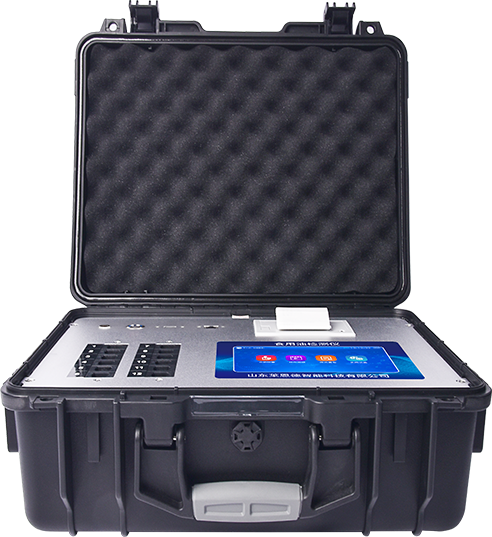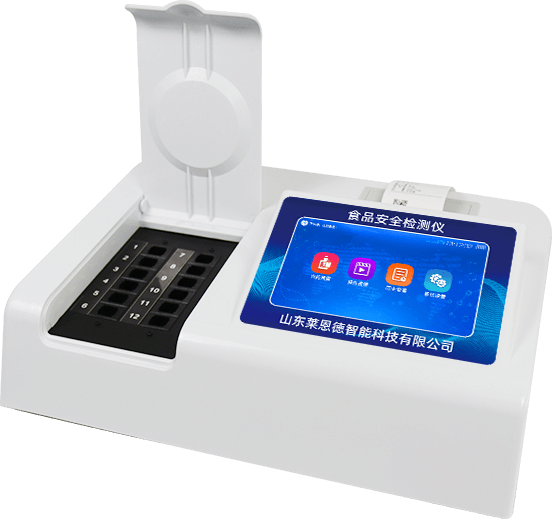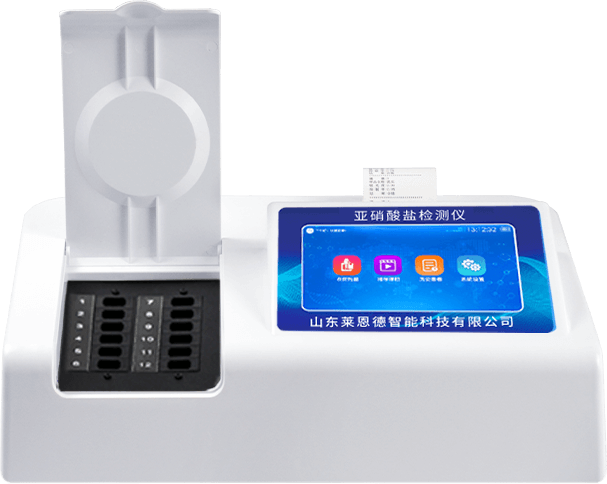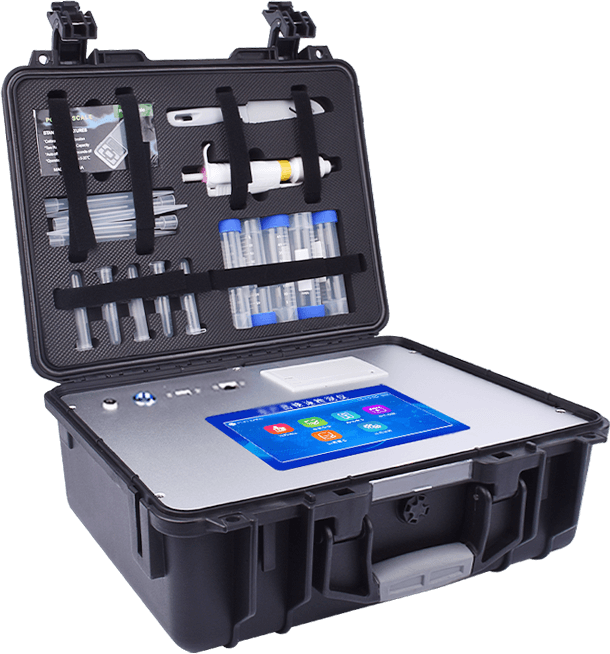
Edible Oil Safety Tester
- Product Number:LD-ZSY
- Product Difference:Rapid testing of acid value, peroxide value, aflatoxin, benzo[a]pyrene, capsaicin, total polyphenols, and other content in edible vegetable oils, edible lard, peanut oil, sunflower oil, rice bran oil, food, and meat products
Product Introduction
The Edible Oil Safety Tester is an integrated rapid testing and analysis device for oil products, capable of quickly detecting the levels of acid value, peroxide value, aflatoxins, benzo[a]pyrene, capsaicin, total polyphenols, and other contaminants in edible vegetable oils, edible lard, peanut oil, sunflower oil, rice bran oil, food products, and meat products. Through testing, it can determine whether plant oils comply with national standards or are rancid oil, substandard oil, or gutter oil. The instrument reserves additional testing programs and ports, allowing users to conveniently add new testing items as needed in the future. It can be upgraded to a comprehensive testing instrument for aquatic products and flour-based foods in the future.
The edible oil safety testing instrument is widely used in quality supervision and inspection, industrial and commercial administration, fried food production bases, food and drug administration bureaus, health departments, meat product processing enterprises, agricultural departments, inspection and quarantine departments, supermarkets, and various food safety monitoring systems.
Product Features
Android smart operating system, featuring a more efficient UI interface, with Wi-Fi upload, 4G network transmission, GPRS wireless remote transmission, and Ethernet connection capabilities, enabling fast batch data upload.
Integrated portable rapid testing device designed for on-site and mobile testing applications. It enables all testing projects to be conducted within the same software and displays test results intuitively through a single interface.
Highly intelligent with self-diagnostic capabilities: includes power-on self-test and zero calibration functions, as well as automatic repeat detection functionality.
AC/DC dual-use power supply, 12V DC power supply, can be connected to a vehicle power source, and can be equipped with a 6Ah high-capacity rechargeable lithium battery, convenient for outdoor mobile testing.
Next-generation high-speed thermal printer, automatically prints and batch prints test reports and QR codes upon completion of testing.
Colloidal gold module detection method: track-based automatic transmission scanning, with the test card automatically ejected after detection is complete.
Features self-protection functionality, allowing for the setup of usernames and passwords to prevent unauthorized personnel from operating the device.
The instrument automatically identifies CT lines without manual adjustment, and automatically displays the CT coordinate curve upon completion of detection.
Integrated main unit, including photometric colorimetry measurement module and colloidal gold immunochromatography detection module.
Result judgment lines can be modified, reference values and calibration values can be saved, and data is not lost in case of power failure.
The instrument is equipped with a regulatory platform, enabling data upload via local area network and internet, with test results directly transmitted to the food safety regulatory platform. Conduct regional food safety supervision, big data analysis and processing, and data statistics to monitor the short-term and long-term dynamics of regional food safety, achieving food safety issue prediction and early warning.
Built-in powerful database with multi-category and multi-type sample menu functionality, allowing flexible selection of detection samples. Different detection channels can simultaneously test different sample items. Sample names, detection indicators, and detection units can also be directly edited and entered on the instrument and saved into the sample database.
The instrument includes built-in operation demonstration videos, serving as your on-hand laboratory guidance expert.
Sample processing is simple and efficient, with overall operations being fast, safe, and convenient.
High sensitivity, high detection accuracy, and high repeatability accuracy, with a scanning high-precision optical sensor.
Compatible with all colloidal gold cards available on the market, with no restrictions on consumables, enhancing the user experience.
The instrument features recalibration, lock, and factory reset functions.
Continuous sample feeding, continuous detection, and automatic incrementing of sample numbers.
The main control chip uses an ARM Cortex-A7, RK3288/4-core processor with a clock speed of 1.88 GHz, offering faster operation and greater stability. It features a 7-inch LCD touchscreen display with a user-friendly Chinese interface, providing intuitive and simple readings.
Four-wavelength cold light source with 12 detection channels, each channel equipped with 410, 520, 590, and 630 nm wavelength light sources. The standard configuration includes an advanced optical path switching device, and the professional optical path switching function can achieve up to 64 wavelengths. All detection projects can be performed simultaneously across all channels.
Intelligent constant current voltage regulation, automatic adjustment and calibration of light intensity, with no temperature drift in the light source during prolonged continuous operation.
Built-in new national limit standards, enabling on-site comparison with test results and continuous updates to standards.
Storage capacity for detection results: 200,000 entries.
Supports USB flash drive copying, standard USB interface, and plug-and-play without drivers.
Detection items can be expanded, and firmware can be upgraded.
Product parameters
| Accuracy error | ±3% |
| Linear error | ±5‰ |
| Stability | ±0.001A/hr |
| Wavelength accuracy | < 2.0 nm |
| Transmittance Repeatability | ±1% |
| Lower Limit for Edible Oil Testing | 0.2 mg KOH/g |
| Lower Limit for Meat Products and Food Testing | 0.5 mg KOH/g |
| Linear range | 0.2–10 mg KOH/g |
| Data storage | 200,000 entries |
| Cuvette | 10×10 mm standard sample cell |

 +86 19353291814
+86 19353291814
 +86 19353291814
+86 19353291814


